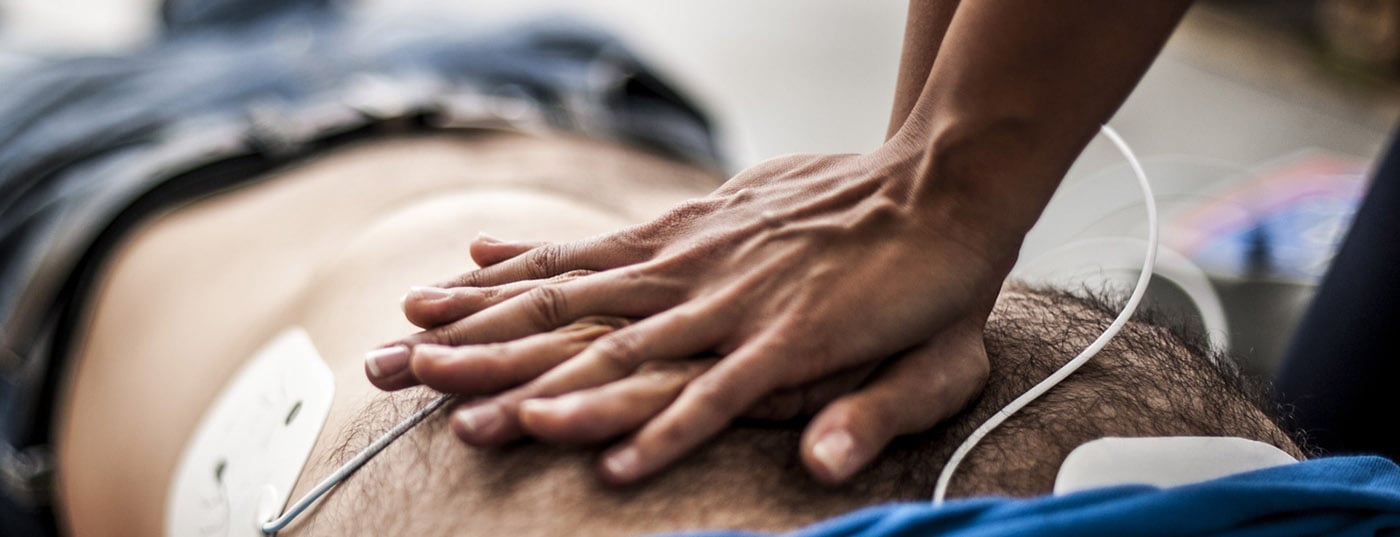Cardiopulmonary resuscitation (CPR) is characterized by typical elements of an emergency situation: It is time-critical, has the potential to cause stress, and optimally requires team building. Using CPR as an example, Prof. Hunziker shows the variables of successful communication in a state of emergency.
“You cannot not communicate” with this axiom of Paul Watzlawick opened Prof. Sabina Hunziker, Stv. Chief Physician for Psychosomatics and Senior Physician for Medical Communication at the University Hospital in Basel, gave her presentation. This insight is particularly relevant in everyday medical interactions with patients. In her presentation, Prof. Hunziker reminds us that people in medical communication situations are often in a state of emergency, whereas the same situation on the sender side is often an everyday routine task. The four-sided model of communication by Friedemann Schulz von Thun mentioned in the lecture clearly explains how misunderstandings between doctor and patient can occur under the constellation mentioned due to the different levels of a message. Additionally complicating good communication in this case is the asymmetry of professional communication. Reciprocity between the two parties is removed and a power imbalance takes place in favor of the physician. This stranger now has the right, albeit on a purely professional level, to intervene in the intimate sphere of the body. So in this challenging setting, how can we ensure that the best possible communication can occur? “Does good communication really help patients?”
A systematic approach is needed to address these questions with certainty. Instead of applying empirical values in terms of communication techniques, Prof. Hunziker recommends evidence-based communication with the backing of clinical outcome studies.
Communication in the resuscitation situation
Cardiopulmonary resuscitation (CPR) is characterized by typical elements of an emergency medical situation: it is time-critical, has the potential to cause stress to the individuals involved, and, optimally, requires the need for team building. Using the setting of such a CPR, Prof. Hunziker demonstrated the variables of successful communication in a state of emergency. In the context of this issue directly affecting both morbidity and mortality, the chief medical communicator questioned why the outcome of CPR has remained at a poor level for decades despite great efforts to teach medically trained personnel the algorithms of CPR. Evaluations revealed interruption of chest compressions and too slow a pressure frequency on the thorax as some sources of error. In addition to the purely technical parameters, Prof. Hunziker believes that communication within the team also plays a decisive role in the successful completion of resuscitation. With this in mind, the question becomes, “How do words save lives?”
Team communication
Resuscitation is a typical situation in which good teamwork is essential. Because these circumstances are usually unforeseen or sudden, these teams often form spontaneously or ad hoc. The influence of this on the outcome of resuscitation in detail was investigated in a prospective, randomized, simulator-based study [1]. Two cornerstones of CPR were found to be hands-on time and time to first defibrillation longer in ad hoc teams. This can have fatal consequences for patients, Prof. Hunziker explains, as for every minute that resuscitation measures are delayed, the probability of survival drops by 10%. In contrast, the teams that had already worked together before the onset of circulatory arrest showed better implementation. Significantly better leadership communication stood out in particular.
The importance of a leadership structure in the context of an exceptional situation such as resuscitation is also demonstrated by other studies. Hunziker S, et al. [2] were able to show that leadership training is much more effective for the outcome of CPR than pure training in technical know-how. Cooper and Wakelam [3] also advocate structure building in the first responder team through leader training to improve resuscitation outcome, according to their study results. The latter considerations have also been implemented in practice, as recommendations in the guidelines for “advanced life support” courses.
Human factors
In addition to working as a team unit, the individual is critical to overall success in a resuscitation. Thus, there are factors that can be influenced by training as well as those that are difficult to control from the outside. Relatively uninfluenceable factors here are gender and individual personality, which are co-determinants of performance as a team leader regardless of training level [4].
Another influential factor on an individual’s performance, and thus on his or her ability to communicate in exceptional situations, is stress. As mentioned above, the resuscitation situation can be a typical trigger for exactly this. Depending on the extent of the perceived stress, it can increase performance or, if personal resources are depleted, decrease it. This is illustrated by the stress model of Lazarus [5]. In conclusion, a prospective observational study demonstrated that only personally perceived stress had an impact on CPR performance, independent of objectively measurable biomarkers of stress in the body [6]. This perceived stress can be reduced by simple stress management strategies at the communication level, but so far without significantly improving the success of resuscitation. Further clinical studies are needed here.
Communication with patients
Communication between doctor and patient represents the cornerstone of good medical care. In the acute resuscitation situation, this can certainly no longer be guaranteed in most cases, but in most emergency situations there is still sufficient opportunity to do so, ideally at the latest after stabilization of the patient. In her presentation, Prof. Hunziker gives an overview of the different models for successful communication between doctor and patient: the Paternalistic, the Participative and the Informative Model, where in each case either the doctor, doctor and patient together or the patient alone makes/will make the decision on how to proceed. Patient education and involvement in decision making as so-called “shared decision making” can lead to a reduction of inpatient admissions in certain constellations while maintaining safe medical care [7] and is therefore, if possible, an efficient communication option.
Communication with relatives
After the acute resuscitation situation is over, the explanatory conversation with the waiting relatives follows in most cases, which should certainly also be incorporated under the topic of communication in emergency situations. This conversation, considered more of a formality, can have more impact on psychological developments than many would suspect. An observational study from the University Hospital of Basel found that 40% of relatives of “out-of-hospital cardiac arrest” patients developed post-traumatic stress disorder (PTSD) [8]. Of the six risk factors for the development of PTSD examined in the study, three relate to the relationship or communication between family members and medical staff in the ICU providing care and are thus theoretically modifiable. Even simple measures, such as handing out a specific brochure along with a communication strategy-such as longer team meetings and more opportunities for relatives to share-can lessen the acute stress of the death of a loved one [9].
Good communication therefore has an influence not only on the outcome of the resuscitation measure, but also on the psychological processing of the situation by the relatives and, in the best case, can prevent misunderstandings and thus wrong decisions.
Source: SGAIM Spring Congress, May 4, 2017, Lausanne
Literature:
- Hunziker S, et al: Hands-on time during cardiopulmonary resuscitation is affected by the process of teambuilding: a prospective randomised simulator-based trial. BMC Emerg Med 2009 Feb; 9: 3.
- Hunziker S, et al: Brief leadership instructions improve cardiopulmonary resuscitation in a high-fidelity simulation: a randomized controlled trial. Crit Care Med 2010 Apr; 38(4): 1086-1091.
- Cooper S, Wakelam A: Leadership of resuscitation teams: ‘Lighthouse Leadership’. Resuscitation 1999 Sep; 42(1): 27-45.
- Streiff S, et al: Leadership in medical emergencies depends on gender and personality. Simul Healthc 2011 Apr; 6(2): 78-83.
- Lazarus RS: The psychology of stress and coping. Issues Ment Health Nurs 1985; 7(1-4): 399-418.
- Hunziker S, et al: Dynamics and association of different acute stress markers with performance during a simulated resuscitation. Resuscitation 2012 May; 83(5): 572-578.
- Hess EP, et al: Shared decision making in patients with low risk chest pain: prospective randomized pragmatic trial. BMJ 2016 Dec; 355: i6165.
- Zimmerli M, et al: Prevalence and risk factors for post-traumatic stress disorder in relatives of out-of-hospital cardiac arrest patients. Resuscitation 2014 Jun; 85(6): 801-808.
- Lautrette A, et al: A communication strategy and brochure for relatives of patients dying in the ICU. N Engl J Med 2007 Feb; 356(5): 469-478.
HAUSARZT PRAXIS 2017; 12(6): 48-50












